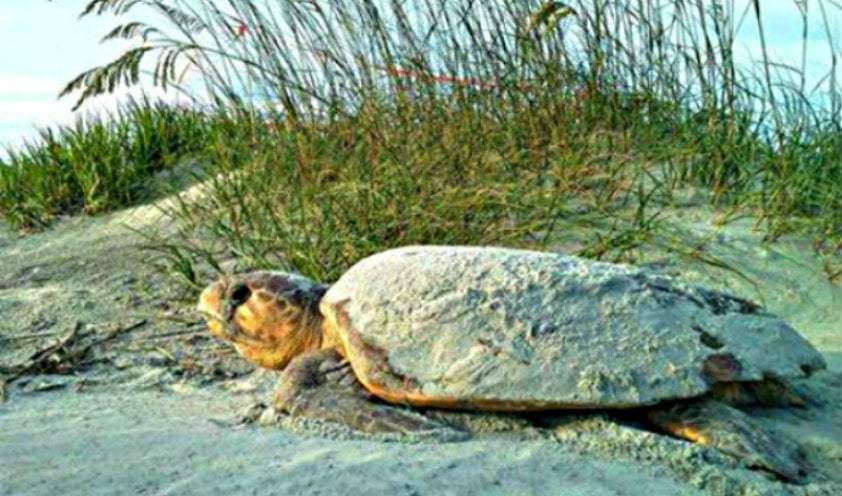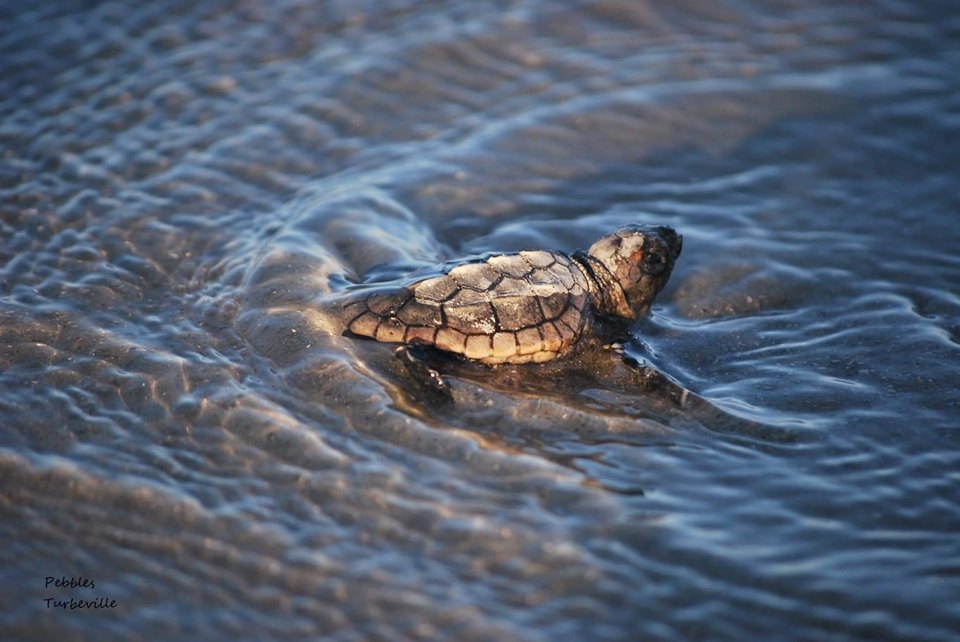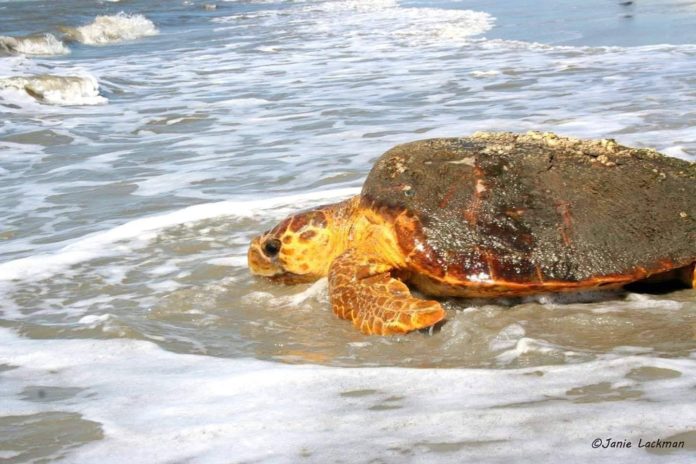It’s been a record setting 2019 sea turtle nesting season here in the Palmetto State, with beaches all over South Carolina getting into the fun.
Sea turtles have laid the most nests on South Carolina beaches in 2019 since record keeping began in the early 1980s, according to the S.C. Department of Natural Resources.
A whopping 8,798 loggerhead sea turtle nests were laid in this season on state beaches; destroying the previous record of 6,444 set in 2016, which had surpassed the then-previous record of 5,193 set in 2013.
That record was smashed.
SCDNR oversees a network of volunteers who help staff count nests. Volunteers and staff from Hunting and Harbor islands have reported very high nest counts and beaches all over the Lowcountry and the rest of the state are reporting the same.

As of the October 8th, Hunting Island State Park has seen 153 nests; Fripp Island has had 165; Daufuskie Island has seen 158; Edisto Beach State Park has had 351 while Edisto town beach had 244; Hilton Head has seen 464; Pritchards Island has seen 110 nests; and Harbor Island has enjoyed 96 nests so far this season.
Even little Coffin Point Beach on St. Helena Island has had a record year with 26 nests. Smaller yet, Lands End beach on St. Helena Island even had 4 nests this year.
“This has been a tremendous season so far, and we are grateful for our dedicated network of volunteers in South Carolina who make this large-scale conservation effort happen,” said biologist Michelle Pate, director of SCDNR’s sea turtle program.
Surprises along the way
The 2019 season began four days earlier than it usually does with an April 26th nest laid on Hilton Head by a Kemp’s ridley, the world’s most endangered sea turtle.
Also, Beaufort saw a few rare Green sea turtle nests this year as well. Hunting Island had it’s first ever Green nest and Hilton Head had one too.
The first hatch of the 2019 season occurred in Hilton Head on June 27th. It was the Kemp’s ridley nest.

Day nesters frequently seen
A high number of ‘day nesters,’ or female sea turtles that come ashore to nest in broad daylight instead of more typical darkness, has also been documented in 2019. The increased number of day nesters could be because of dry sand conditions, which can hinder a sea turtle’s efforts to dig a nest cavity, or harassment during night emergence, the release said.
“Day nesters tend to be pretty rare, isolated events,” Pate said.
Record-breaking years have become increasingly common across the Southeast recently, according to the release, and sea turtle biologists are optimistic that the trend signals the beginning of recovery for loggerhead sea turtles, whose nests make up the vast majority of nests here in the Palmetto State. Loggerhead turtles were listed as threatened under the Endangered Species Act in 1978.
State and federal law prohibits the harm of or interference with sea turtles or their nests. Harassment includes any activity that changes a sea turtle’s natural behavior, ranging from approaching nesting females to take photos to ‘assisting’ hatchlings on their path to the ocean.
“Sea turtles are wild animals,” Pate said. “Let nature take its course.”
If we continue to let nature take its course….we might just keep having record years like 2019.
Here’s hoping.










